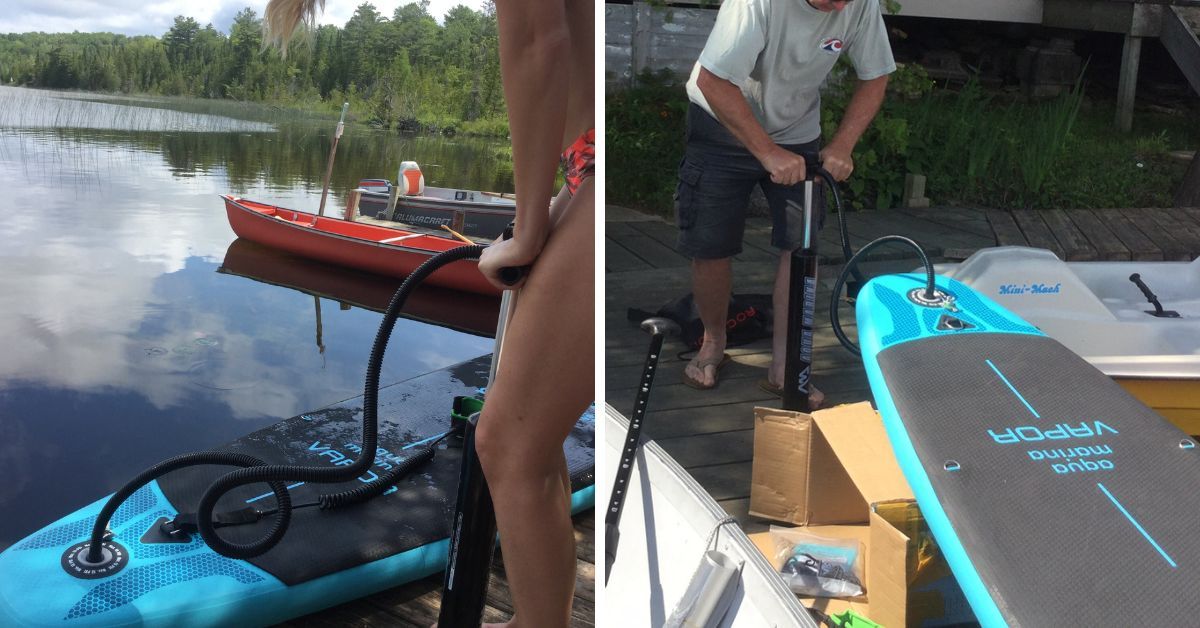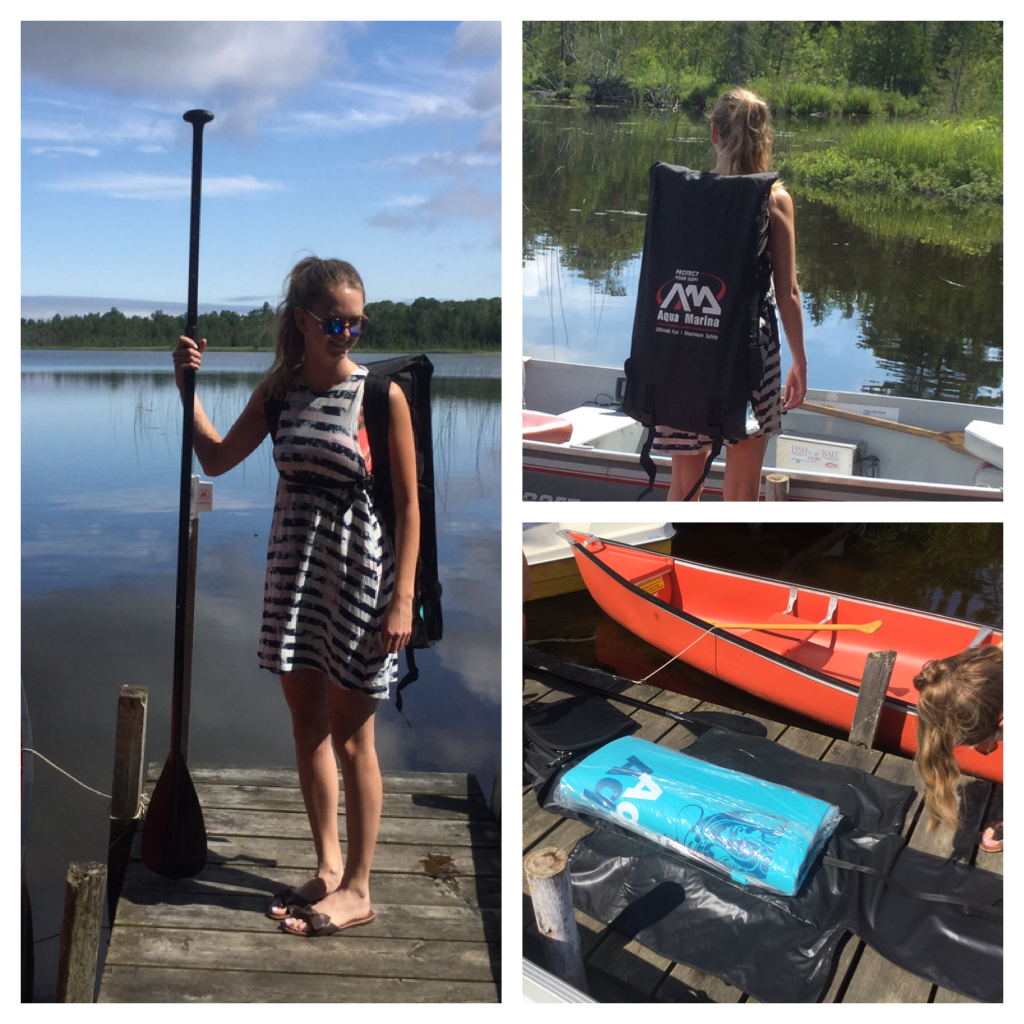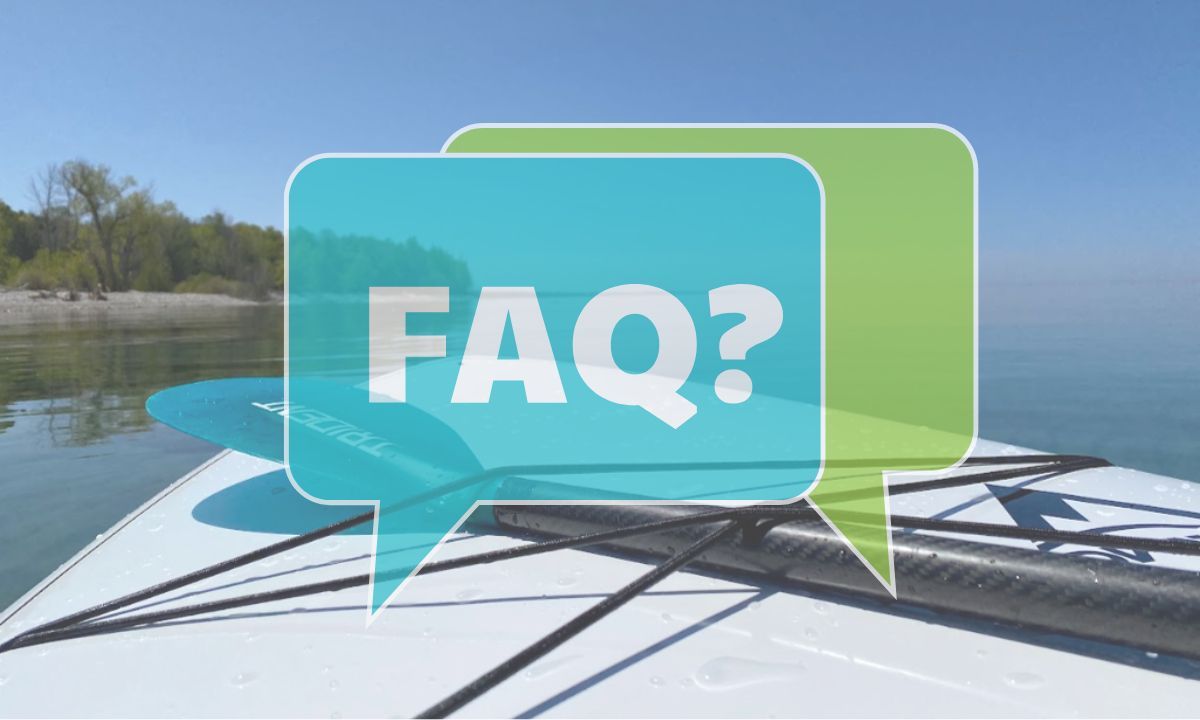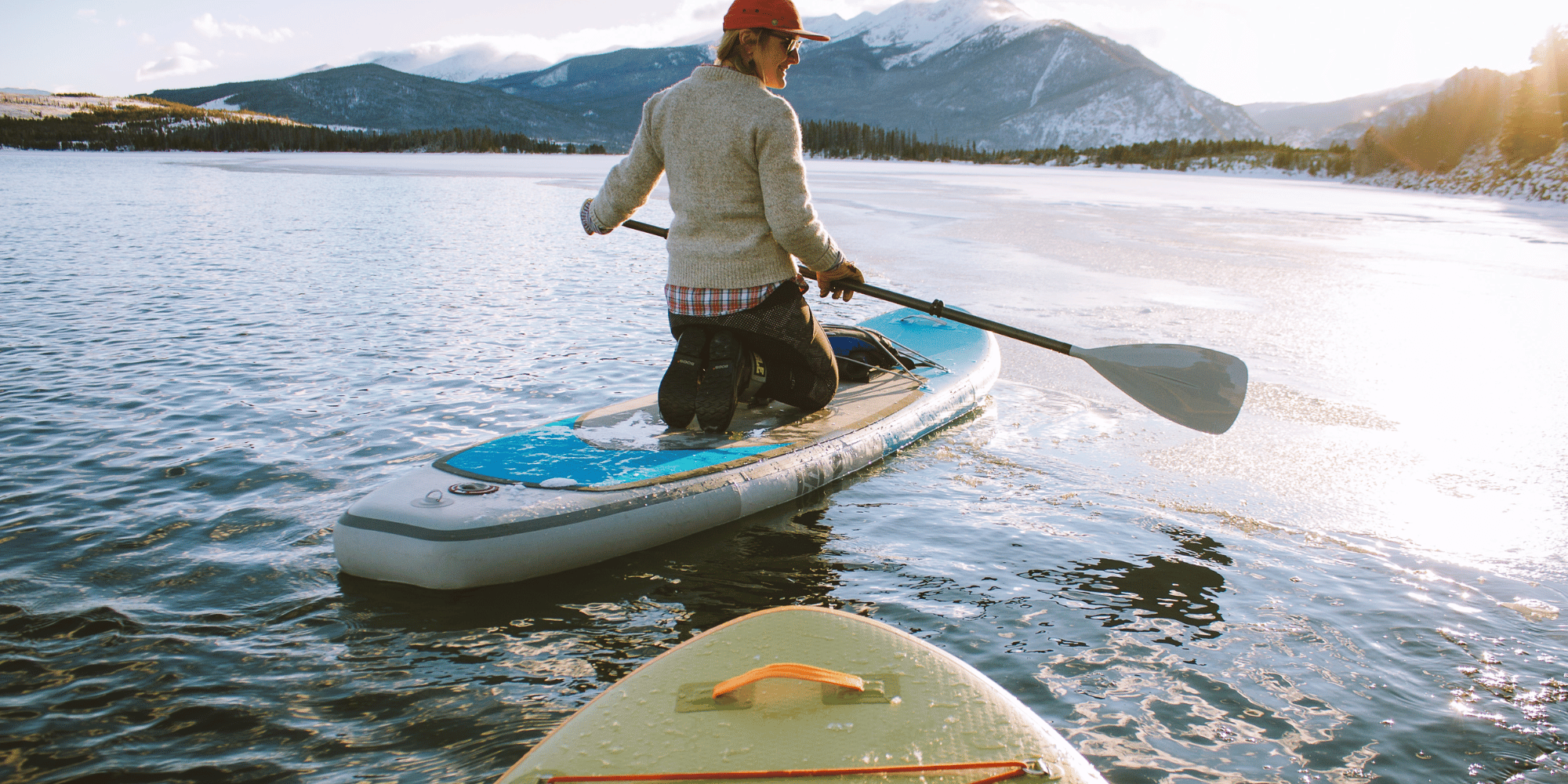Stand up paddle boarding (SUP) is a fun and adventurous water activity that has gained popularity over the years. It's a wonderful way to enjoy nature while getting a good workout.
Growing in popularity are quality inflatable stand up paddle boards. iSUP boards first came to the market around 2006 and have since become increasingly popular due to their light weight, transportability, durability and ease of use.
Modern inflatable SUP technology has improved dramatically over the years and iSUPs are now being widely used for a variety of water activities ranging from recreational paddling to racing and even surfing.
In order to maximize your paddle boarding experience, it is important to understand proper inflation techniques. The good news is that inflating an iSUP board doesn’t require much effort or equipment; with the right guidance, you can learn how to inflate like a pro in no time!

Here are some tips to help you inflate your stand up paddle board safely and efficiently:
- Make sure the area is free of sand, dirt or debris that could damage the valve or get into the SUP board.
- Use a quality electric air pump for efficient inflation; manual pumps require more effort but can be used in a pinch.
- When using an electric pump, make sure it is set to the correct pressure (typically up to 15 PSI).
- Use a pressure gauge if you have one for accuracy.
- Monitor your board while inflating; stop and check the pressure every few minutes to ensure the board isn’t overinflated.
- When finished, cap off the valve with its protective cover.
If you follow these tips, inflating your board will become routine before you know it!
Taking a few moments to properly inflate your SUP is the first step towards having an enjoyable and safe paddle boarding experience.
Let's take a look at each step to inflating your SUP more carefully:

Step 1: Get Your Equipment Ready
As with any task, it is important to come prepared. Get your equipment ready for board inflation by gathering your pump, hose, and inflatable paddle board. Ensure that your pump is compatible with your board and always check your board’s pressure requirements before starting. A shoulder strap or a backpack is also helpful when carrying your board from your car to the water.
Step 2: Position Your Board
When inflating your inflatable SUP board, you want to ensure that your board is in a flat and stable surface. Look for any sharp or hard objects that might puncture your board like rocks, sticks, or shells during inflation. Position your board making sure the side with the fin box is facing up for easy installation of the fin later after inflation.
Step 3: Inflate Paddle Board
Insert the pump's hose firmly into the valve of the board and start pumping. Always make sure that the pump's hose is properly inserted to avoid any air leakages while inflating. As you pump, steady inflation by holding the pump handle if it has one, and make sure to keep an eye on the pressure gauge to avoid exceeding the recommended pressure limits of your board. Continue pumping until your board is fully inflated to the recommended pressure.
Step 4: Install the Fin
After inflating your board to the recommended pressure, you can now install the fin. The fin adds stability, tracking, and helps streamline the board. To install the fin, slide it into the fin box and align the tab with the groove of the fin box. Once installed, fasten it tightly with the fin screw.
Step 5: Stow Away Your Equipment
After inflating your inflatable SUP board, don’t forget to stow away your equipment. Secure the hose and the pump, fold your board, and stow it in the backpack and secure backpack straps or use the provided carry bag for easy transportation. Always remember to rinse your board with fresh water to prevent salt build-up, and let it dry completely before stowing it away properly.
Additional Tips for Maintaining Your Inflatable Paddle Board
After mastering the art of inflating your SUP board, it's crucial to ensure your equipment stays in top shape to provide years of paddleboarding enjoyment. Inflatable SUP boards are durable, but they can last even longer with the right care and maintenance.

Here are some additional tips for care and maintenance that are crucial for any iSUP board owner:
- Regular Inspection: Regularly inspect your inflatable SUP board for any damage or wear and tear. This includes checking for any leaks, tears, or loose seams that may need urgent attention.
- Proper Deflation: Just as important as correctly inflating your SUP board, the deflation process is equally crucial. Make sure to carefully deflate the board, avoiding any sharp objects that could potentially damage the board.
- Storage: Always store your SUP board in a cool, dry place, away from direct sunlight. Prolonged exposure to the sun can cause the material to degrade over time.
- Cleaning: Rinse your board with fresh water after every use to remove any salt, sand, or other debris. Always ensure the board is dry before storing it to prevent mildew or mold growth.
- Board Patching: If your board gets a puncture, don't panic. Most inflatable boards come with repair kits that include patches and adhesive. Follow the instructions provided to patch the board and allow it to dry completely before using it again.
- Off-Season Care: If you're not using your board for an extended period, consider deflating it and storing it in its carry bag. This will protect it from dust and accidental damage.
Remember, proper care and maintenance can significantly extend the lifespan of your inflatable SUP board, ensuring many seasons of enjoyment on the water.
Frequently Asked Questions Related to Inflating a Stand Up Paddle Board

We understand that our readers may still have some queries or uncertainties about inflating a SUP. To address these concerns, we've compiled a list of frequently asked questions that other enthusiasts often ask. This section covers everything from equipment needs, the inflation process, to tips for proper maintenance. Whether you're a beginner or a seasoned paddle boarder, you'll find valuable insights here. So let's dive in!
How much pressure do you need to inflate a stand up paddle board?
The recommended pressure of an inflatable SUP board will vary depending on the size and weight capacity of the board. Generally, most boards require a psi between 10-15 for optimal performance. Make sure to check the manufacturer's manual for exact instructions.
How long does it take to inflate a stand up paddle board?
The time taken to inflate an SUP board depends on the size of the board and the power of the pump you are using. For most average sized boards, it should take no more than 10-15 minutes to inflate.
Can I use an electric car tire pump to inflate my stand up paddle board?
Yes, you can use an electric car tire pump to inflate your SUP board. However, make sure the pressure of the pump does not exceed the maximum psi limit of the board.
What is the best way to store an inflatable stand up paddle board?
The best way to store your inflatable SUP board is by deflating it and storing it in its carry bag or backpack. This will maximize protection against dust, dirt, and accidental damage from sharp objects. Additionally, make sure you always dry your board completely before storing it.
What should I do if stand up paddle board gets a puncture?
If your SUP board gets a puncture, make sure to patch the area using an appropriate repair kit. Most inflatable SUP boards come with their own repair kits that include patches and adhesive. Follow the instructions provided carefully to patch the board
How hard is it to pump up a stand up paddle board?
Pumping up an inflatable SUP board is relatively easy and straightforward. All you need to do is insert the hose firmly into the valve of the board and start pumping. Make sure to keep an eye on the pressure gauge to avoid exceeding the recommended limits of your board. Generally, it should take no more than 10-15 minutes for most average sized boards.
Can I inflate my paddle board with an electric pump?
Yes, you can use an electric pump to inflate your SUP board. An electric air pump will not only provide faster and easier inflation but it can also be used for deflating and inflating other equipment. Make sure to check the manufacturer’s instructions before using any type of electric pump.
How do I know when my paddle board is fully inflated?
The best way to know when your SUP board is fully inflated is by using a pressure gauge. Most inflatable paddle boards come with their own pressure gauges, so be sure to check the manufacturer’s manual for exact instructions on what pressure levels are recommended. Additionally, you can also give the board a gentle push in different areas to check for any air pockets.
Are there any additional precautions I should take when inflating my stand up paddle board?
Yes, there are a few important precautions to keep in mind when inflating your SUP board. Make sure you don't over or under-inflate the board to avoid compromising its performance and durability. Always use the right type of pump to prevent any potential damage to the board. Consider a manual pump versus electric pumps and know proper inflation requirement for your board. Use a PSI gauge if you have access to one to achieve the desired pressure for your inflatable board. Additionally, avoid using sharp objects during deflation and make sure your board is completely dry before storing it away. By following these instructions, you can ensure that your inflatable SUP board stays in tip-top shape for years of enjoyment on the water!
Can you use an air compressor to inflate a SUP?
Yes, you can use an air compressor to inflate a SUP board. However, make sure the pressure output of your air compressor does not exceed the recommended psi limits of your board. Additionally, some air compressors may produce more heat than electric pumps due to their higher pressure levels - so be mindful when using one. Always check the manufacturer's instructions before using an air compressor to inflate your SUP board.
What is the best temperature for inflating a SUP board?
Ideally, you should inflate your SUP board at room temperature. Cold temperatures can cause the material of the board to become stiff and brittle while hot temperatures can cause it to deform or expand. Additionally, extreme cold or hot temperatures can also cause the valves to malfunction. For best results, always inflate your board indoors or in a cool and shady spot outdoors.
What does iSUP stand for?

iSUP stands for inflatable stand up paddle board. An iSUP is an inflatable paddle board that can be deflated and packed into a compact size, making it easy to store and transport. These boards are known for their durability and stability on the water - perfect for both beginners and experienced paddlers alike.
Are inflatable paddle boards suitable for whitewater and rough conditions?
Inflatable SUPs generally can't handle extreme whitewater adventures or rough sea conditions due to their construction materials. For these types of activities, a hardboard may be more suitable as it is usually more durable and stable in less-than-ideal conditions. However, some inflatable boards are designed specifically for whitewater and rough conditions - so do your research before purchasing an iSUP to make sure it is suitable for your needs.
Can I use a bike pump to inflate my SUP board?
Yes, you can use a bike pump to inflate your SUP board. However, it is important to note that a manual pump or bike pumps are usually not as effective or efficient as electric pumps when it comes to inflating a SUP board. Additionally, with a bike pump you will need to exert more effort and time into pumping up your board - so consider investing in an electric pump if you want a faster and easier inflation process.
What is the difference between 15 and 20 PSI SUP?
The main difference between a 15 PSI SUP and a 20 PSI SUP is the firmness of the board. A 15 PSI SUP will feel softer and more flexible when stood on, while a 20 PSI SUP will be stiffer with less flex underfoot. Additionally, 20 PSI boards are typically able to hold up better under higher loads than a 15 PSI board. It is important to note that a 20 PSI SUP will require more effort and time for inflation than a 15 PSI board, as it needs to be pumped up higher.
What accessories are available for an iSUP?
In addition to the board itself, there are a wide variety of paddle board accessories available for an iSUP. These can include everything from fins, a kayak seat, to an adjustable paddle that can convert to a kayak paddle, paddle grip tape and waterproof bags. Some inflatable boards even come with their own repair kits - ideal for patching up any small punctures or tears on the go. With the right iSUP accessories, you can ensure that your iSUP is outfitted for any adventure!

Another important accessory to consider is an ankle leash. This will help keep you and your board together in case of unexpected waves or currents - making it a great addition for those planning to explore further away from shore.
Inflatable Paddle Boards are Great for Paddlers of all Skill Levels
Inflatable paddle boards have come a long way since they were first introduced. Beginner paddlers will appreciate this type of lightweight board, along with their stability and floatation while experienced paddlers will enjoy the outstanding maneuverability and performance of an inflatable stable board.
Additionally, iSUPs have advanced to now be used in multiple environments - from flatwater to waves - so there is something for everyone. Whether you are a beginner or an experienced paddler, an inflatable paddle board will give you the opportunity to enjoy the water in whatever way you choose.
Now that you have learned the steps to inflate your stand up paddle board, you are ready to hit the water and enjoy your paddle board experience like a pro.
No more struggling with board inflation before paddling.
Always ensure that you follow the recommended pressure requirement for your board. Pump away, install the fin, and enjoy your paddle board experience.
Happy paddling!
P.S. - You may also be interested in the following articles ...












